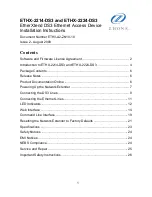
13-4
Catalyst 4500 Series Switch, Cisco IOS Software Configuration Guide - Cisco IOS XE 3.9.xE and IOS 15.2(5)Ex
Chapter 13 Configuring Cisco NSF with SSO Supervisor Engine Redundancy
About NSF with SSO Supervisor Engine Redundancy
Because SSO continues forwarding network traffic during a switchover, routing flaps are avoided.
•
Maintains user sessions established prior to the switchover
Catalyst 4500 series switches also support route processor redundancy (RPR). For information about
these redundancy modes, see
Chapter 10, “Configuring Supervisor Engine Redundancy Using RPR and
SSO on Supervisor Engine 6-E and Supervisor Engine 6L-E.”
SSO Operation
SSO establishes one of the supervisor engines as active while the other supervisor engine is designated
as standby, and then SSO synchronizes information between them. A switchover from the active to the
redundant supervisor engine occurs when the active supervisor engine fails, or is removed from the
switch, or is manually shut down for maintenance.
In networking devices running SSO, both supervisor engines must be running the same Cisco IOS
software version and ROMMON version so that the redundant supervisor engine is always ready to
assume control following a fault on the active supervisor engine. SSO switchover also preserves FIB and
adjacency entries and can forward Layer 3 traffic after a switchover. Configuration information and data
structures are synchronized from the active to the redundant supervisor engine at startup and whenever
changes to the active supervisor engine configuration occur. Following an initial synchronization
between the two supervisor engines, SSO maintains state information between them, including
forwarding information.
During switchover, system control and routing protocol execution is transferred from the active
supervisor engine to the redundant supervisor engine.
Note
Use the [
no
]
service slave-log
configuration command to forward all error messages from the standby
supervisor engine to the active engine. By default, this capability is enabled. For details, refer to the
Catalyst 4500 Series Switch Cisco IOS System Error Message Guide
, Release 12.2(37)SG.
NSF Operation
NSF always runs with SSO and provides redundancy for Layer 3 traffic. NSF is supported by the BGP,
OSPF, IS-IS, and EIGRP routing protocols and is supported by Cisco Express Forwarding (CEF) for
forwarding. The routing protocols have been enhanced with NSF-capability and awareness, which means
that routers running these protocols can detect a switchover and take the necessary actions to continue
forwarding network traffic and to recover route information from the peer devices. The IS-IS protocol
can be configured to use state information that has been synchronized between the active and the
redundant supervisor engine to recover route information following a switchover instead of information
received from peer devices.
A networking device is NSF-aware if it is running NSF-compatible software. A device is NSF-capable
if it has been configured to support NSF; it rebuilds routing information from NSF-aware or
NSF-capable neighbors.
Each protocol depends on CEF to continue forwarding packets during switchover while the routing
protocols rebuild the Routing Information Base (RIB) tables. After the routing protocols have converged,
CEF updates the FIB table and removes stale route entries. CEF then updates the line cards with the new
FIB information.
Summary of Contents for Catalyst 4500 Series
Page 2: ......
Page 4: ......
Page 2086: ...Index IN 46 Software Configuration Guide Release IOS XE 3 9 0E and IOS 15 2 5 E ...
















































